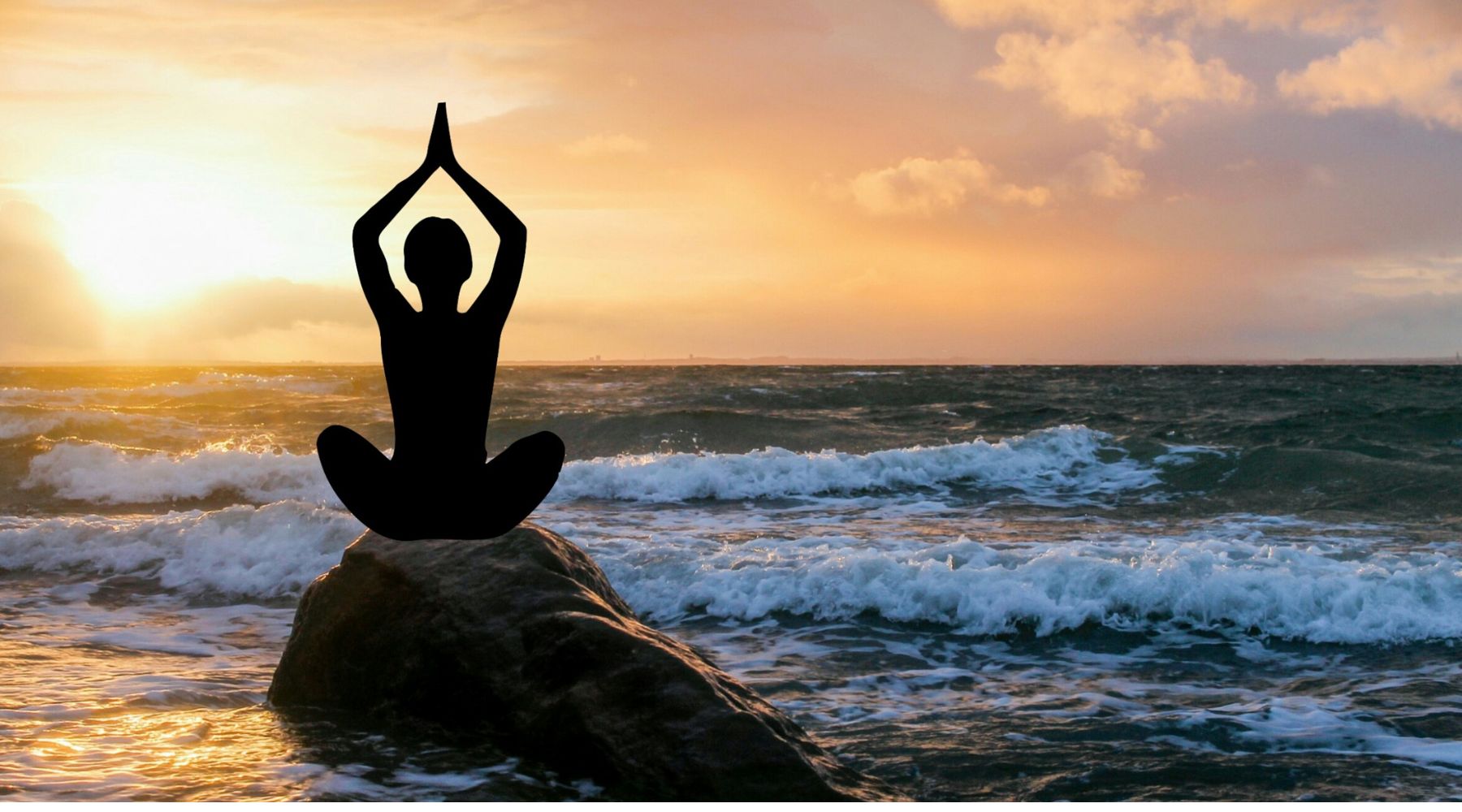
The Top 5 Meditation Poses
Which Meditation Pose is Right for You?
Do you feel stressed and overwhelmed? Are you having trouble sleeping? It seems as though almost every day someone is recommending meditation to someone. Have you tried meditating? Do you know which meditation pose is best for you?
Incorporating meditation into your daily routine has a seemingly infinite number of benefits to your overall quality of life. Meditation has been scientifically proven to reduce stress and anxiety in the body. It can also improve your attention span, overall happiness and emotional well being. Figuring out how to get started can feel like the hard part, but with these top five meditation positions you will be able to enter your deepest meditation and start sculpting the perfect daily meditation practice for you.

1. Sitting in a Chair
Sitting in a chair is one of the best beginner meditation poses. Sitting upright, with your feet planted flat on the ground and with your hands resting on your lap or on your legs is the best form. It is best to not lean on the back of the chair but to sit up straight and alert. This can feel a little uncomfortable for beginners, so grabbing a pillow for support is a great hack.
One of the bigger reasons sitting is a great beginner meditation pose is because you are very unlikely to fall asleep during a meditation session where you are sitting. When you are working on finding that balance between relaxed and alert versus just ready to fall asleep, sitting in a chair is the meditation pose for you.

2. Sitting on the Floor
No chair, no problem. Sitting on the floor is a great option as well. In fact, sitting cross legged on the floor is probably the most widely known meditation pose used in modern media. We can all picture this pose, right? Someone is sitting cross legged, sometimes on a pillow, with their palms up resting on their legs. Because this image is so classically connected to meditation it should be no surprise that it is one of the best poses.
If sitting cross legged hurts your knees or just becomes uncomfortable after a prolonged period of time, you can definitely uncross your legs and stretch them out before you. Do not worry. All you really need to focus on is that your back is straight and that you feel relaxed. The most important part of meditation is that you feel comfortable, because if you are focused on your left foot falling asleep, you will not be able to really meditate to your best abilities.
3. Lying Down
Most people would automatically assume that lying down is the best meditation pose. While it is a wonderful meditation position, as mentioned above, you just need to make sure you are not likely to fall asleep. If you are uncomfortable sitting due to back or hip injuries, please lay down to get in your meditation practice for the day. You can lay on the floor, flat, with no support. This is another great option for beginners because you will feel more comfortable while working on a new skill. Let your legs relax about hip width apart and turn your palms upward. If you have ever taken a yoga class, think about the final poses at the end of a class, savasana or corpse pose.
Another way you can lay down during meditation is to place a small or thin pillow under your head and another one under your knees, so your feet are flat on the floor but your knees are relaxed on the pillow. The bending of the knees here can help take pressure off of your low back if it is sensitive. Putting a yoga mat down can also keep you out of the falling asleep zone.
4. Standing
This one may surprise people, but you can definitely meditate while standing up. With so many of us working desk jobs these days and spending hours crouched over a computer, standing may even be preferable. One option for a standing meditation is to place your feet hip distance apart and make sure you are not locking your knees. We do not want anyone to faint. Lift your arms to around your chest height and pretend you are holding a big beach ball with your hands. Try to keep your breath as steady and even as possible, if possible through your nose. Tune into your body and feel every sensation that may arise, attempting to soften any parts of the body that clamp up.
Another standing option for you to try is similar to the above but place your feet shoulder width apart and turn your heels in and your toes out so your feet are at a wide angle. Once again, make sure you do not lock your knees. Place your hands on your stomach, right hand on top of left hand, and feel yourself breathe. Picture in your minds eye energy flowing from the earth, through the bottom of your feet and up through your entire body.
The final standing option we are going to dive into is to place your feet shoulder width apart but place your feet parallel to each other this time. Let your arm, shoulder and neck muscles relax. Focus on the feeling of your feet on the ground and your breath moving through your body.
5. Walking
Now if the idea of being able to stand while meditating threw you for a loop, just wait until you learn that you can even do it while walking or running. Walking is a wonderful way to meditate and many people who go for regular walks might not even realize they are partaking in a meditative practice.
Walking meditation consists of being aware, present and mindful while walking through your neighborhood or a park. Your eyes should be open because closing them would be risky and you should be moving at a comfortable pace that keeps your breath even.
We spend so much of our lives pulling ourselves out of the present moment through music, apps, podcasts and TV. Walking in the present moment with no distractions is a wonderful way to meditate.


